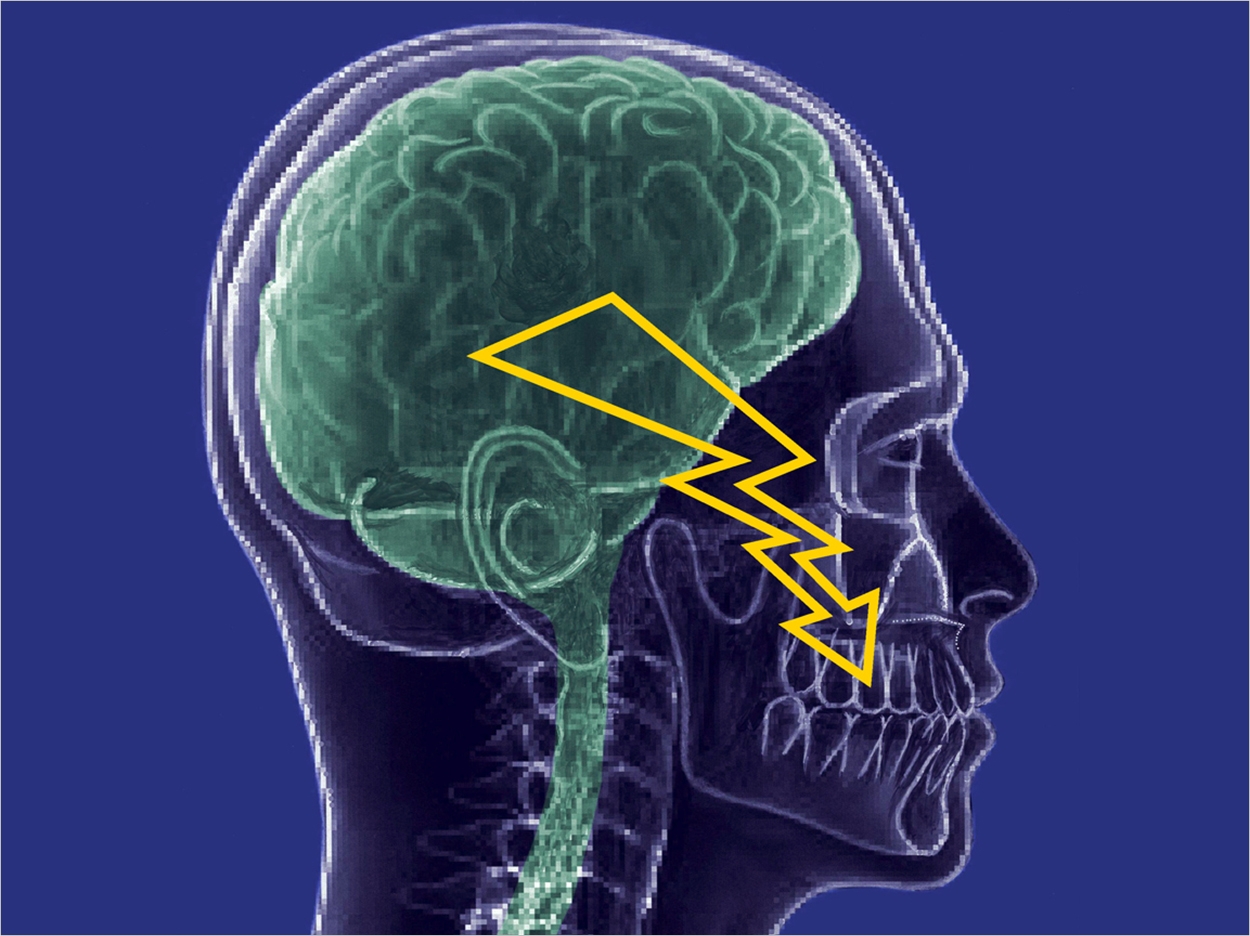
Patients with trigeminal neuralgia endure sharp, lancinating pain in their teeth and face triggered by touch, such as when they shave, shower, and brush their teeth. But current pharmaceutical treatments sometimes leave patients tired and unable to concentrate. Now, the Center of Dental Medicine at the University of Zurich has developed a substance that effectively inhibits the pain without these unwelcome side effects.
Pain signals reach the brain via the activation of sodium channels located in the membranes of nerve cells. A sodium channel known as “1.7” is frequently expressed on pain-conducting nerves, and higher pain intensity is linked to higher channel activity. Blocking this sodium channel via treatments such as local anesthetics can inhibit the pain.
The neuropathic pain that comes with trigeminal neuralgia happens as a result of irritation of the trigeminal nerve, which is responsible for the sensory innervation of the face, parts of the scalp, and the oral cavity. In trigeminal neuralgia, the nerve damage is presumed to be at the base of the skull. This region is difficult to reach by local injections, though, requiring drug treatment and even surgery, depending on the case.
A substance called BIIB074 inhibits the 1.7 sodium channel state-dependently, meaning the more active 1.7 gets, the stronger it is blocked by BIIB074. Current medications, however, block 1.7 regardless of the nerve activity, resulting in burdening side effects. These results were demonstrated in an international Phase II study.
“Unlike conventional drugs, which often cause tiredness and concentration problems, BIIB074 was not only effective, but also very well tolerated,” said Dominik Ettlin, MD, DMD, a dental specialist at the university. “We will now test the new substance in a lot more subjects during the next study phase, which will reveal whether the new hope for more effective pain relief is justified.”
Trigeminal neuralgia occurs most often in people older than age 50 years, reports the National Institute of Neurological Disorders and Stroke, and it is more common in women than in men. There are about 12 new cases per 100,000 people in the United States each year. The typical form of the disorder involves sudden burning or shocking sensations that last from a few seconds to 2 minutes, while the atypical form involves constant but less intense pain.
The study, “Safety and Efficacy of a Nav1.7 Selective Sodium Channel Blocker in Trigeminal Neuralgia: A Double-Blind, Placebo-Controlled, Randomized Withdrawal Phase 2a Trial,” was published in The Lancet Neurology.
Related Articles
Precision Medicine Overcomes Painful TMD Treatment
Chronic Pain Treatment Proves Difficult for Some Implant Patients











